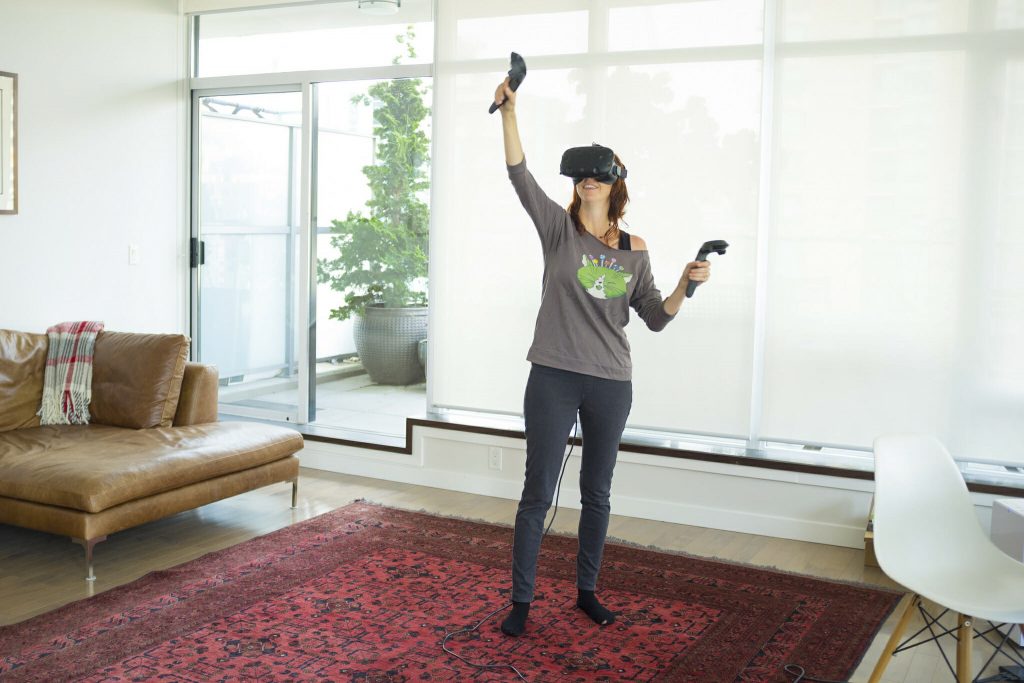Since Virtual Reality (and other Immersive technologies i.e. Augmented Reality, Mixed Reality – VR/AR and MR) came down from seeming obscurity to the flaming tech hype train some are asking themselves, is this for real or a gimmick. We have been excited by 3D TV back in the day. It’s not that far ago even. Just rewind the clock about 5, maybe 6 years ago when 3D TV was “the future”. Amazing 3D floating objects breaking the 4th wall right in our living room. And not only that, VR has made the appearance decades before. Anyone remember Virtual Boy? So what is the redeeming factor of VR then?
Start your free trial of Viar360!
So what is preventing Virtual Reality going the same way down into oblivion like 3D TV? To get a better understanding of that question we need to see why 3D TV failed and have some sort of comparison with Immersive Tech.
1) Wearing Glasses is uncomfortable
This has always been true. I don’t know anyone who’s would be willing wear glasses (except hardcore hipsters) who would wear glasses for a prolonged time to see some content. Arguably both 3D TV and VR has its own issues with uncomfortable headsets. Everyone is trying to cut the bulk from the plastic headwear and it seems like VR has ways to go. HTC Vive and Oculus Rift HMD (Head-Mounted Displays) looks like future racing helmets and not only the size but you are also tethered to a PC while using it. HTC recently introduced an untethered upgrade but it’s still a big piece of software. Microsoft Hololens is on the other hand completely untethered device and if there’s something to be believed from Magic Leap – we could be watching virtual and augmented worlds through a simple lens that will have the proportions of now almost forgotten Google Glass.
2) The Content and Applications
First steps of the VR in 2015/2016 has been clumsy. The media hype brought the attention but the content wasn’t there yet. Silly mobile apps like rollercoasters soon became a boring gimmick you showed someone on the lunch break because you happen to have a VR cardboard on you and then forget about it. However, VR is slowly extending its tentacles in gaming, adult entertainment (doh) and hopefully soon education. Today more money is spent on playing video games than on watching Movies and TV combined.
Just to think of it, VR already has some potential with interesting apps in circulation. There’s TiltBrush, Harmonix Music VR, Rec Room, and simulators. These might not make someone buy the whole rig but it shows the diversity.
These fields are having enormous potential since the reach to the viewer is digital and price of distribution relatively low. But those industries are only a few from a massive list of other solutions that already exists.
3) Virtual Reality Gaming
Some say gaming is going to be the determining factor in VR. If there is an absolute mind blowing AAA game developed for VR, people would jump on it. I remember I did the same thing. I’ve bought a Playstation 2 because I would be the first to play Grand Theft Auto – San Andreas and couldn’t wait for the PC release. I would assume a lot of hardcore gamers are waiting just for a similar excuse.
If we look at the numbers and evolving technology, it makes a perfect sense. An advancing performance in computer graphics, computing, mobile technology and mixing with the biggest digital entertainment industry in the world, the scene is set to be explosive.
The distribution is much easier as well. Vive and Rift already started a wave of excitement among gamers Steam is already having tons of VR games on their platform (current quick look is showing 410 titles that support VR). On the console, Playstation has come out with its own VR headset. Approximately 36 million Playstation 4 units are already in people’s household. This means the PS4 Morpheus Headset already have access to the people’s living rooms.
What is missing is that S-level title that will surprise and make it worthwhile for majority to get the headset, the console/PC and enjoy the masterpiece in the immersive medium. Check some of the titles that may scratch that itch.
4) The Investment
Tech companies sometimes have to take risks and be the first one through the door. This can be crap and shoot and often you can get burned badly. Even if you have a solid product Dreamcast, Betamax and arguably 3D TV you can still fall flat on your nose. The execution, content and wielding the power to influence target opinion is the real 1-2 punch. Companies who a e pouring zillions of dollars into the VR fund are giants like Facebook, Microsoft, Google, IBM and Valve/(Steam, HTC Vive). Just think about it. These companies are shaping the tech and are not charity businesses. Facebook alone has access to more human souls than any other media company.
Ok but that’s only the monetary investment. How about the time investments. We’ve got a number of big players on the field where millions of people are watching their every move. I’m talking about New York Times. NYT jumped on a VR bandwagon last year with NYT VR app and distribution of more than 1.2 million free VR headsets to their subscribers.
5) The Cost
Along with a lack of content, one thing that can plummet and stop the sales numbers is cost. While it’s natural that early adopters will jump on the hi-tech stuff with money in their hands.
If that special gadget costs thousands of dollars and there’s no way you can use it with a cool content, even they will stay away. Think about gaming consoles launches. If there aren’t a few amazing AAA titles on the release day, the sales will suffer in short and long term. Even this year, 3D TV costs about 2 grand.
VR devices aren’t cheap either. HTC and Oculus headsets are going to cost you about between $600 (Rift) or $800 (Vive), and you’re going to have to have a decent desktop to run those two beasts as well. That one will probably cost you around $1000 as well. Some companies like Chronos have built small VR ready hardware sets for developers and managed to keep the cost down under a grand.
On the other side, you can enjoy Cinematic VR experiences on your mobile phone and a pair of cheap cardboard viewers. At this point, you can get plastic headsets from random Chinese manufactures under $20. This is a much more scalable way to reach people with incredible storytelling experiences which were New York Times plan from the get-go. But even if the cost is somewhat high on the hardware side, the next point quickly turns the needle to the VR way.
6) User Generated Content
Oh my gosh. The tipping point. We have gone a long way from bad apps, shaky cams in 360 and learn how to avoid biggest mistakes in conveying the story to the user. While the year 2016 is still a year of experimentation, we have learned a lot. Henry, a VR cartoon from Oculus Story Studio won an Emmy, games are becoming more and more fun to play, and the influencers are loving the immersive medium (Joe Rogan is loving it). But not only is the content getting better, it’s open source. Spherical Cameras are dropping their prices and there are Cinematic VR platforms that are making the storytelling content creation as easy as making a powerpoint presentation.
For immersive VR projects everyone can use Unity and Unreal Engine 4 for free. Yes, there’s a steep learning curve and it can get difficult fast for newcomers to learn scripting and C programming but the passion of developers and helpful community are breaking down these barriers with force. In fact here’s the Unity VR tutorial section to help you get started.
The content is getting better and more creative, hence the collaborative knowledge is overcoming some daunting issues both 3D TV and VR have suffered from the start – motion sickness and nausea.
7) The Community
When there are open source software and huge passion, there’s also a strong community. VR has without a doubt one of the most supportive groups who is striving to push the envelope again and again. More than anyone else, the West Coast has VR meetups, workshops, hackathons, conferences, webinars and other events on a daily basis.
The community is accepting towards anyone who is curious and willing to learn. When a newcomer comes to one of these events and tries some of the demos developers have built, they become believrs as well.
8) The Influencers
Besides well-known companies, there are the individuals who have drunk the kool-aid and believe in VR wholeheartedly. Namely, Tim Ferriss, Joe Rogan and Kevin Spacey are one of the biggest ambassadors of Virtual Reality. The first two are more in the entertainment while Mr. Underwood believes in more global applications such as education.
But besides celebrities, there are influencers in the tech world – John Carmack, the wonder buy who left ID Software to pursue VR to Nonny De La Peña, a VR journalist who has belief in storytelling and has mentored the Oculus creator, Palmer Luckey.
But these goes further. Influencer are also on the local level. Jenn Duong and Julie Young has been known for bringing women and minorities together under SH//FT organization from LA (and one of the best facebook vr communities as well – Women in VR), Eva Hoerth has established a community in Seattle as well.
9) Projections
Goldman Sachs report projected that VR hardware revenues could reach $182 billion by 2025—making it bigger than the TV market. Digi-Capital projects $150 billion and disrupting mobile by 2020. With all the different applications, huge potential in mobile disruption and the gaming industry these numbers aren’t just made up.




